 November 16, 2023 John E. Ross, KD8IDJ, Editor
| ||||||
ARRL Hails FCC Action to Remove Symbol Rate Restrictions ARRL reports that Monday, November 13, 2023, the FCC Commissioners unanimously voted to amend the Amateur Radio Service rules to replace the baud rate limit on the amateur HF bands with a 2.8 kHz bandwidth limit to permit greater flexibility in data communications.
"Specifically, we remove limitations on the symbol rate (also known as baud rate) -- the rate at which the carrier waveform amplitude, frequency, and/or phase is varied to transmit information -- applicable to data emissions in certain amateur bands," concluded the FCC Report and Order and Further Notice of Proposed Rulemaking (DA/FCC # FCC-23-93; WT Docket No. 16-239) adopted November 13, 2023. "The amateur radio community can play a vital role in emergency response communications, but is often unnecessarily hindered by the baud rate limitations in the rules." Consistent with ARRL's request, the amended rules will replace the current HF restrictions with a 2.8 kHz bandwidth limit. "We agree with ARRL that a 2.8 kilohertz bandwidth limitation will allow for additional emissions currently prohibited under the baud rate limitations while providing sufficient protections in the shared RTTY/data subbands," concluded the FCC Report and Order. ARRL President Rick Roderick, K5UR, hailed the FCC's action to remove the symbol rate restrictions. In a Further Notice of Proposed Rulemaking (FNPRM), the FCC proposes to eliminate similar restrictions where they apply in other bands. "We propose to remove the baud rate limitation in the 2200-meter band and 630-meter band... and in the very-high frequency (VHF) bands and the ultra-high frequency (UHF) bands. Additionally, we seek comment on the appropriate bandwidth limitation for the 2200-meter band, the 630-meter band, and the VHF/UHF bands." ARRL has previously expressed its support for eliminating the symbol rate limits in favor of bandwidth limits where they apply on the VHF and UHF bands but suggested that the bandwidth limits themselves be reviewed in light of today's technology and tomorrow's possibilities. Similarly, when eliminating the baud limits on the 2200- and 630-meter bands, consideration should be given to what, if any, bandwidth limits are appropriate. The new rules will become effective 30 days after being published in the Federal Register. The FCC will announce a period for public comment on the additional proposed changes based upon publication of the FNPRM in the Federal Register. No date has been set for publication. 2023 ARRL November Sweepstakes Continues The second part of the ARRL November Sweepstakes is for phone contacts, and it begins Saturday, November 18 at 2100 UTC, and runs through Monday, November 20 at 0259 UTC. The contest objective is to support amateur self-training in radiocommunications, including improving amateur operating skills, conducting technical investigations, and intercommunicating with other amateurs. This year's Sweepstakes includes some updates:
There were 262 plaques awarded for 2022 November Sweepstakes. What's it take to earn a high score or win a plaque? Check out the scores and winners from previous years at contests.arrl.org for the phone and CW results. A complete list of rules can be found www.arrl.org/sweepstakes The University of Scranton Amateur Radio Club, W3USR, Got a Facelift With a grant from Amateur Radio Digital Communications (ARDC) for almost $200,000 and private donations of more than $20,000, the University of Scranton Amateur Radio Club in Scranton, Pennsylvania, has installed new amateur radio equipment and antennas for its station, W3USR.
The station is now located on the fifth floor of the university's Loyola Science Center and features state-of-the-art operating positions with heavy-duty controllers, all-mode transceivers, speakers, desktop microphones, and other components that allow students to operate on amateur radio frequencies. A 40-foot tower with a high-frequency antenna for 14, 21, and 28 MHz has been installed, as well as VHF/UHF satellite and microwave antennas -- some with rotating mounts. The ARDC grant was awarded to the university's Physics and Engineering Department Assistant Professor Nathaniel Frissell, W2NAF, and the private donations were made by Dr. Mary Lou West, KC2NMC; Ed Hayes, N6XEM, and Jeff DePolo, WN3A. Dr. Frissell said the impact of the new station means everything to the club. "When you can bring a group of students into a new facility like this one, the impact makes a lasting impression that will allow them to fully experience amateur radio," he said. Dr. Frissell added that the first radio contacts have been made, and the station is working on 10, 15, and 20 meters with additional installation work remaining. An additional room on the same floor holds equipment and antenna connections and, will be used as a lab for controlled HamSCI space research projects. The new capabilities of W3USR will also allow for ongoing and future HamSCI research projects to be undertaken by Dr. Frissell and university students. W3USR was founded in the spring of 2020 with a mission to educate students on the ionosphere and the importance of radio communication. The club regularly participates in the ARRL Collegiate Amateur Radio Program. SKYWARN Recognition Day Is Ready to Go The 2023 SKYWARN⢠Recognition Day (SRD) is December 2 from 0000z to 2400z.
The National Oceanic and Atmospheric Administration (NOAA) website is now updated with the SKYWARN registration form, mapping form, and rules and information you'll need to check in for this year's event. It's important to review the following event resources on the NOAA website:
SRD was developed in 1999 by the NWS and ARRL. Amateur stations exchange contact information with as many NWS stations as possible on 80, 40, 20, 15, 10, and 6 meters, plus the 2-meter and 70-centimeter bands. Contacts are also permitted using repeaters. Non-amateur radio spotters can exchange information with NWS offices using social media. To learn how to become a trained NOAA storm spotter visit Spotter Training (weather.gov) . In 2022, more than 5,000 spotters participated in SKYWARN Recognition Day. Amateur Radio in the News ARRL Public Information Officers, Coordinators, and many other member-volunteers help keep amateur radio and ARRL in the news. "Homecoming complete for Detroit Lakes Amateur Radio Club" / Detroit Lakes Tribune (Michigan) November 6, 2023 -- The Detroit Lakes Amateur Radio Club is an ARRL Affiliated Club. "Amateur radio operators test skills at statewide disaster drill" / The Advocate (Louisianna) November 7, 2023 -- The Ascension Amateur Radio Club is an ARRL Affiliated Club. "Antenna goes up for student-run HAM radio station at University of Scranton" / WNEP (Pennsylvania) November 10, 2023 -- The University of Scranton Amateur Radio Club, W3USR.
ARRL Podcasts On the Air The Value of Contest Clubs "Contesting encompasses so much of the hobby," says seasoned contester Craig Thompson, K9CT, "from station building, learning how to operate, understanding propagation, knowing the rules, learning from your peers," that there's something in it for every ham radio operator. As current member and former president of the Society of Midwest Contesters, Craig knows the ins and outs of running a contest club and ensuring that the value proposition makes sense to the average member. In this episode, Craig talks about why you might want to get involved with a contest club, what it entails, and how these specialized clubs stir up on-air activity that benefits every ham. This discussion extends the November/December 2023 On the Air, "Joining a Contest Club," by Leanna Figlewski, KC1RMP. ARRL Audio News The On the Air podcast is available on iTunes. The On the Air podcast and ARRL Audio News are also on blubrry -- On the Air | ARRL Audio News. Announcements The 16th annual Santa Net will be on the air evenings at 7:00 PM CT between Thanksgiving and Christmas on 3.916 MHz. Check in is taken 30 minutes before the net begins. Youngsters can talk to Santa at the north pole using strategically placed operators who relay the voice of Santa. The Santa Net is a team effort by The 3916 Nets members, and they're expecting over 1,000 contacts this year. The Santa Net is also streamed live on YouTube. In Brief... The Bridgerland Amateur Radio Club in northern Utah provided amateur radio communications support for the 2023 Bear 100 Endurance Run on September 29 - 30. Overall, 74 amateur radio operators participated -- 58 aid station operators, six data team operators, and 10 net control operators assisted alongside a multitude of other volunteers that staffed the aid stations. Because of the event's remote location, Winlink, packet radio, and five Starlink systems were used to aid in the transfer of data and eliminated most traffic on the repeaters, except for emergency and priority communications. Thanks to Assistant Traffic Manager of the ARRL Utah Section Tyler Griffiths, N7UWX, for the information. The SETI Institute, a non-profit scientific research organization, recently announced that they recceived a philanthropic gift of $200 million from the estate of Franklin Antonio, N6NKF (SK). The funding will be used to detect signals of life and intelligence in the universe. Antonio, who passed away in 2022, was a long time ARRL Member and is best known to radio amateurs as the author of the, Instant-Track orbital tracking software that AMSAT sold for many years. Phil Karn, KA9Q, says, "Franklin's personal involvement in the SETI Institute as an engineering consultant took them a long way in the few years he was involved." The K7RA Solar Update Tad Cook, K7RA, of Seattle, Washington, reports for this week's ARRL Propagation Bulletin, ARLP046:
Solar activity was lower this week, November 9 - 15, 2023, with the average daily sunspot numbers dropping from 89.7 to 80.1, and the average daily solar flux from 151.7 to 133.8. If those numbers seem a little low lately, we should check the bulletin from the same week last year. In the November 18, 2022, bulletin, the average daily sunspot number changed from 79.8 to 72.3, so a year later we are definitely trending higher. Geomagnetic indicators were also lower, with the planetary A index changing from 22.3 to 10.4, and the middle latitude A index from 14.6 to 8.6. A single new sunspot group appeared on November 10, another on November 12, one more on November 13, and another on November 14. The predicted solar flux is 120, 118, 116, 120, and 122 on November 16 - 20; 125 on November 21 - 22; 135 on November 23 - 25; 140, 148, and 152 November 26 - 28; 155 on November 29 through December 1; 152, 150, 148, and 145 on December 2 - 5; 140 on December 6 - 8; 145, 135, 130, and 125 on December 9 - 12, and 120 on December 13 - 15. The predicted planetary A index is 10 and 8 on November 16 - 17; 5 on November 18 - 19; 8 on November 20 - 21; 5, 12, 18, 20, and 12 on November 22 - 26; 8 on November 27 - 28; 5 on November 29 through December 3; 10, 16, 12, and 10 on December 4 - 7; 5 on December 8 - 9; 8 on December 10 - 13, and 5 on December 14 - 18. Check this site for an update of current conditions on various bands: https://dr2w.de/dx-propagation/ Sunspot numbers for November 9 - 15, 2023, were 93, 93, 85, 78, 85, 86, and 41, with a mean of 80.1. The 10.7-centimeter flux was 138.7, 143.9, 141.5, 137.2, 132.7, 123.8, and 118.9, with a mean of 133.8. Estimated planetary A indices were 12, 10, 5, 12, 16, 6, and 12, with a mean of 10.4. The middle latitude A index was 8, 7, 4, 10, 5, and 11, with a mean of 8.6. A comprehensive K7RA Solar Update is posted Fridays on the ARRL website. For more information concerning radio propagation, visit the ARRL Technical Information Service, read "What the Numbers Mean...," and check out the Propagation Page of Carl Luetzelschwab, K9LA. A propagation bulletin archive is available. For customizable propagation charts, visit the VOACAP Online for Ham Radio website. Share your reports and observations. A weekly, full report is posted on ARRL News. Just Ahead in Radiosport Yearlong -- ARRL Volunteers On the Air (VOTA). See the State Activations Schedule for weekly W1AW Portable Operations, including:
Upcoming Contests:
Visit the ARRL Contest Calendar for more events and information.
Upcoming Section, State, and Division Conventions
Search the ARRL Hamfest and Convention Database to find events in your area. Have News for ARRL? Submissions for the ARRL Letter and ARRL News can be sent to news@arrl.org. -- John E. Ross, KD8IDJ, ARRL News Editor
ARRL -- Your One-Stop Resource for
Free of charge to ARRL members...
| ||||||
 "The Federal Communications Commission today
"The Federal Communications Commission today 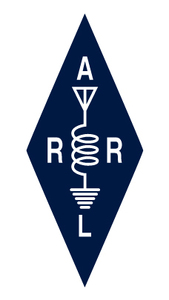 Roderick stated that "this action will measurably facilitate the public service communications that amateurs step up to provide, especially at times of natural disasters and other emergencies such as during the hurricane season. Digital technology continues to evolve, and removing the outmoded data restrictions restores the incentive for radio amateurs to continue to experiment and develop more spectrum-efficient protocols and methods while the 2.8 kHz bandwidth limit will help protect the shared nature of our bands. We thank Congresswoman [Debbie] Lesko (AZ-08) for her efforts on behalf of all amateurs to get these restrictions removed."
Roderick stated that "this action will measurably facilitate the public service communications that amateurs step up to provide, especially at times of natural disasters and other emergencies such as during the hurricane season. Digital technology continues to evolve, and removing the outmoded data restrictions restores the incentive for radio amateurs to continue to experiment and develop more spectrum-efficient protocols and methods while the 2.8 kHz bandwidth limit will help protect the shared nature of our bands. We thank Congresswoman [Debbie] Lesko (AZ-08) for her efforts on behalf of all amateurs to get these restrictions removed."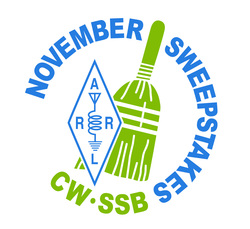 Amateur stations in the US and Canada (including territories and possessions) exchange information with as many other US and Canadian stations as possible on the 160-, 80-, 40-, 20-, 15-, and 10-meter bands. All stations may operate for no more than 24 of the 30 hours, and scores will be calculated from contacts logged during the first 24 hours of operation.
Amateur stations in the US and Canada (including territories and possessions) exchange information with as many other US and Canadian stations as possible on the 160-, 80-, 40-, 20-, 15-, and 10-meter bands. All stations may operate for no more than 24 of the 30 hours, and scores will be calculated from contacts logged during the first 24 hours of operation.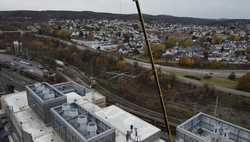
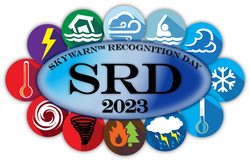 The event honors all SKYWARN storm spotters and amateur radio operators for their contributions to the National Weather Service (NWS) during severe weather. Amateur radio operators also provide vital communication to the NWS and emergency management when normal communications fail.
The event honors all SKYWARN storm spotters and amateur radio operators for their contributions to the National Weather Service (NWS) during severe weather. Amateur radio operators also provide vital communication to the NWS and emergency management when normal communications fail..jpg)
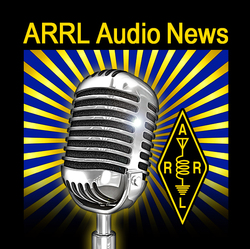 Listen to
Listen to 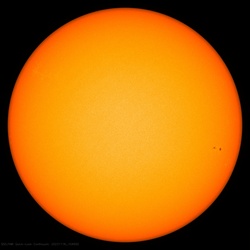
.jpg)
-Blue.jpg)








